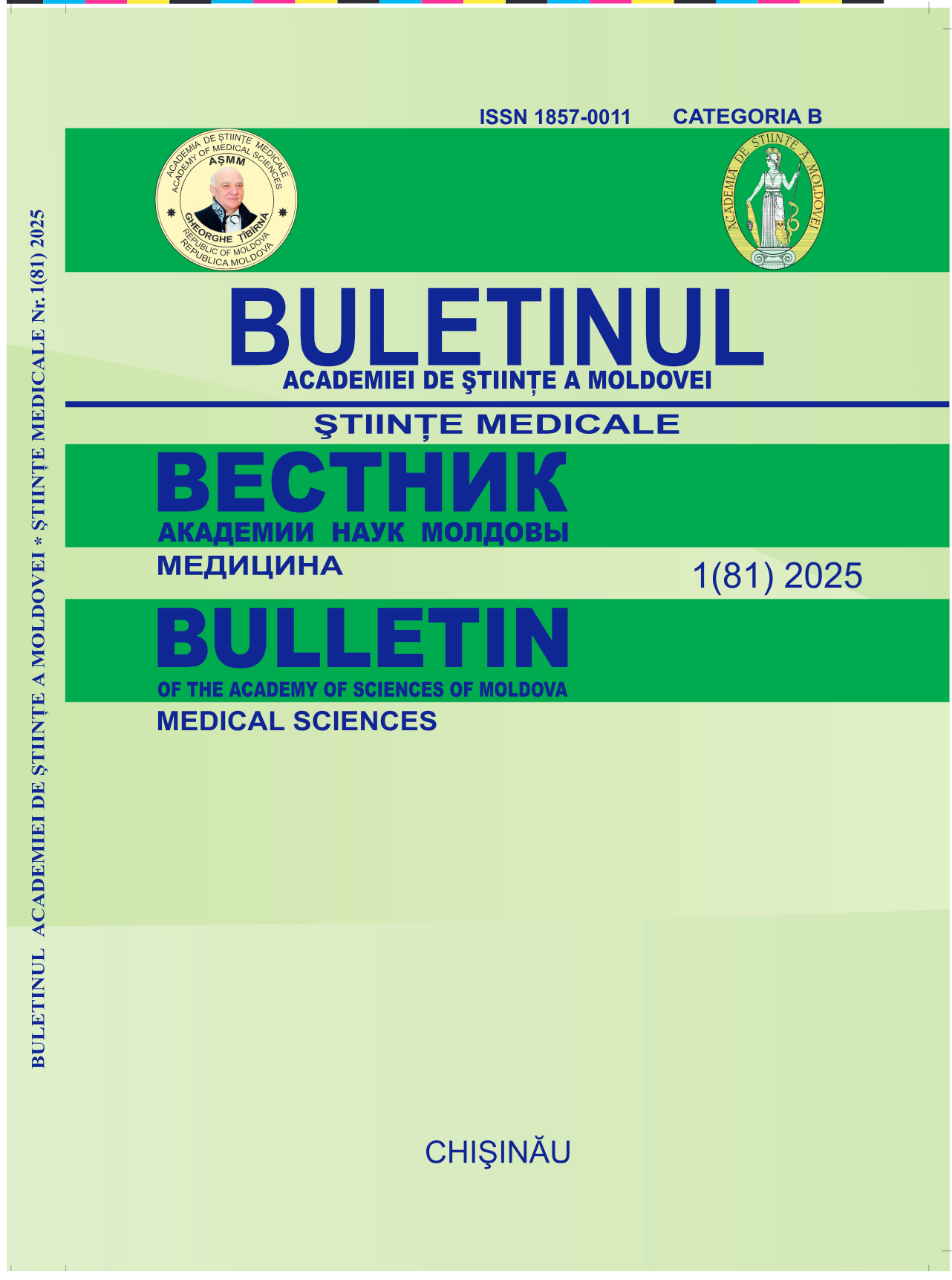Schizoaffective disorder - between schizophrenia and affective disorders: clinical aspects and diagnostic challenges (case study)
DOI:
https://doi.org/10.52692/1857-0011.2025.1-81.23Keywords:
schizoaffective disorder, schizophrenia, affective disorders, differential diagnosis, treatmentAbstract
Introduction. Schizoaffective disorder (SAD) is a rare psychiatric condition positioned at the intersection of schizophrenia and affective disorders. It is characterized by major affective episodes occurring simultaneously with persistent psychotic symptoms, leading to diagnostic and therapeutic challenges. Material and Methods. The study was conducted through a review of recent literature on diagnostic criteria, etiopathogenetic mechanisms, and therapeutic options for SAD, including three clinical cases. Results and Discussion. SAD is often underdiagnosed or mistaken for schizophrenia or bipolar disorder. Current treatments include atypical antipsychotics, mood stabilizers, and personalized psychological therapies. Its nosological classification remains controversial, with new research highlighting common genetic substrates with schizophrenia and affective disorders. Conclusions. Accurate diagnosis of SAD is essential for selecting an appropriate therapeutic strategy. Further studies are needed to optimize treatment guidelines and personalize therapeutic approaches.
References
Perälä J., Suvisaari J., Saarni S.I. et al. Lifetime prevalence of psychotic and bipolar I disorders in a general population. Arch Gen Psychiatry. 2007;64(1):19-28.
American Psychiatric Association. Diagnostic and Statistical Manual of Mental Disorders (DSM-5). 5th ed. Washington, DC; 2013.
Craddock N., Owen M.J. The genetics of schizophrenia and bipolar disorder. J Med Genet. 2005;42(3):193-204.
Geddes J.R., Miklowitz D.J. Treatment of bipolar disorder. Lancet. 2013;381(9878):1672-1682.
Murray R.M., Sham P., Van Os J. et al. A developmental model for similarities and dissimilarities between schizophrenia and bipolar disorder. Schizophr Res. 2004;71(2-3):405-416.
Vieta E., Salagre E., Grande I. et al. Early intervention in bipolar disorder. Am J Psychiatry. 2018;175(5):411- 426.
Yatham L.N., Kennedy S.H., Parikh S.V. et al. Canadian Network for Mood and Anxiety Treatments (CANMAT) and International Society for Bipolar Disorders (ISBD) 2018 guidelines for the management of patients with bipolar disorder. Bipolar Disord. 2018;20(2):97-170.
Harvey P.D. Cognitive impairment in schizophrenia: characteristics, assessment, and treatment. Cambridge University Press; 2013.
Downloads
Published
License
Copyright (c) 2025 Bulletin of the Academy of Sciences of Moldova. Medical Sciences

This work is licensed under a Creative Commons Attribution 4.0 International License.



